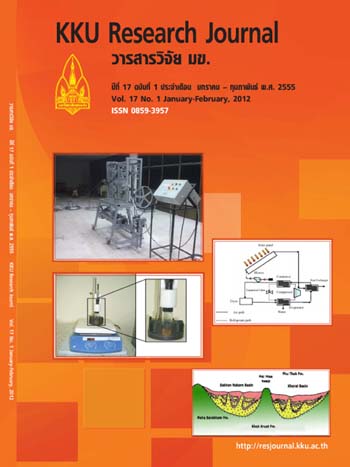Bagging random tree for analyzing breast cancer survival
Main Article Content
Abstract
Building the survivability prediction models is a challenging task because they provide an important approach to assessing risk and prognosis. In this paper, we investigated the performance of combining of the Bagging with several weak learners to build 5-accurate breast cancer survivability prediction models from the Srinagarind hospital database in Thailand. These models could assist medical professional in monitoring survival rates and up-to-date estimations of long-term survival rates. In order to evaluate the performance of models, Area Under the receiver operating characteristic Curve (AUC), sensitivity and specificity were employed. Moreover, the stratified 10-fold cross-validation was utilized to reduce the bias of experiments. Experimental results showed that combining the Bagging with Random Tree is superior to Bagging with weak learning including Decision Stump, REPTree and J48, and single weak learning alone.
Article Details
How to Cite
Thongkam, J., & Sukmak, V. (2017). Bagging random tree for analyzing breast cancer survival. Asia-Pacific Journal of Science and Technology, 17(1), 1–13. retrieved from https://so01.tci-thaijo.org/index.php/APST/article/view/82806
Section
Research Articles


